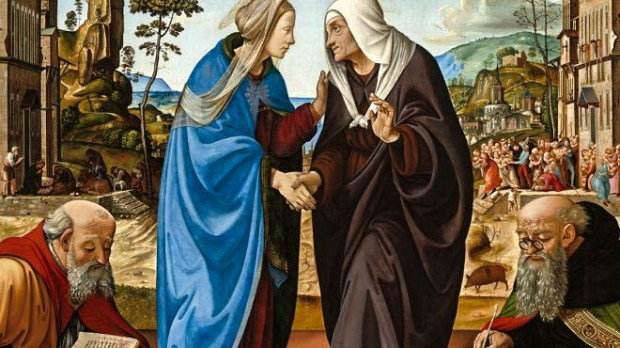One of the most intriguing artists of Italian Renaissance, Piero di Cosimo (1462 – 1522) was known for the “strangeness of his brain.” From Vasari, the biographer, we learn that Piero was terrified of lighting and thunder; he was frugal enough to cook 50 eggs at a time in order to save fuel; he often got enraged by flies and shadows and could not bear ‘the crying of children, the coughing of men and the chanting of friars.’ The greatness of his intellect was to be revered and yet for his uncouth ways, he was regarded as a madman.
The madness of his peculiar personality creeps into his curious paintings delivering a unique and fascinating work of art. Gifted with eccentricity, he converts the ordinary into extraordinary while expressing the extraordinary through little nods of mundane life. He leaves the spectator with a zest of exploring the rich details of his painting without focusing on just the primary subject. Nay, your eyes cannot rest on the protagonist. If they do, you are simply missing out on something brilliantly bizarre.
This season, let’s pry into one of his master works, “The Visitation.”
Adhering to the Gospel, Piero dramatizes the meeting between two expectant mothers who have miraculously conceived. The young Virgin reaches out to embrace her elderly cousin. In a climatic blurt awakened by the leap of the unborn Baptist, Elizabeth exclaims “Blessed are you among women and blessed is the fruit of your womb!” As their gaze and hands affectionately meet, it’s the encounter of the divine with the human.
The intimacy of the moment is interrupted by the howling and wailing of the Massacre of the Innocents. As seen at the right, beneath bare branches, petrified mothers grasp their little ones in sheer defense; a toddler precariously clings to the edge while a lamb scurries off the slope. A Gospel click indeed, the eluding lamb recalls the Holy Family’s Escape to Egypt. A glance above will reveal to us the quirkiness of the narrative. Prosaic men and women happily gaze outside their windows as if regarding a theatrical play. To add to this drollery, a pet monkey is seen whisking along the house pipe.
At a distance from this scene, the preceding Annunciation finds its clever space through a dignified fresco on a Church facade. On the opposite side unfurls the Nativity and the Adoration of the Shepherds. Far from the cityscape is seen the arrival of the Magi as they wind their path through the rocky hills. The peak of the hill illustrates the changing of the seasons through the leaves on the trees.
In spite of all the commotion in the painting, St. Nicholas and St. Anthony Abbot can hardly be bothered as they sit on opposite ends at the foreground. St Nicholas delves deep into the Latin excerpts taken from the book of Wisdom, chapter 1, verses 1-6: “Love justice, you who judge the earth; think of the Lord in goodness, and seek him in integrity of heart.” This was definitely a message to the illustrious banking family of Florence, the Capponis, who were also the patrons of this work of art.
Lying by the saint’s feet are three golden balls. This alludes to the saint’s act of charity in providing secret monetary assistance to a poor peasant in marrying off his three daughters. St. Nicholas today is popularly recognized as Santa Claus. But Piero’s genius goes beyond the depiction of the saint of Christmas. Notice the delicate luster of the spheres as they gleam and cast reflections onto each other. They highlight the sparkle in Piero’s style and technique — as well as being a subtle nod to the Medici family, in whose service the Capponis flourished. The badge of the Medicis was three golden balls.
At the other end is seated St. Anthony Abbot. Often regarded as the founder of organized monasticism, he spent his entire life in the Eastern desert of Egypt in prayer and fasting. He furrows his brows as he peers at his parchment through a genuine pair of Renaissance spectacles. His coarsened hand cradles a leather case onto which he writes with an inked quill. The attributes encircling him include the bell, the Tau shaped cross and the roving pig. While St. Nicholas symbolizes the generous unconditional love of Christ, St. Anthony recalls the life of St. John the Baptist as a voice in the desert crying, “Prepare the way for the Lord.”
At the center of this arrangement, in coordination with other scenes, lies a sprig of wallflower. Now the wallflower since antiquity is used as an antidote to reduce birth pangs. Allegorically it symbolizes Divine Love. Its intentional placement in isolation at the center of the painting reveals to us the mind of the artist. It is a visual statement that every scene in this painting revolves around love; the incarnate love of God made man, the love of two brave mothers and the love of ordinary men and women who dwelled and lived the extraordinary Word of God.
Joynel Fernandes is the Assistant Director of the Archdiocesan Heritage Museum, Mumbai, India. She is currently pursuing her Masters in History. Researching on Church History and Church art is her passion. She hopes to make its understanding more approachable to younger generations.
This article has been kindly granted to Aleteia by our partners in India, Indian Catholic Matters. We encourage you to visit their full website, here.

